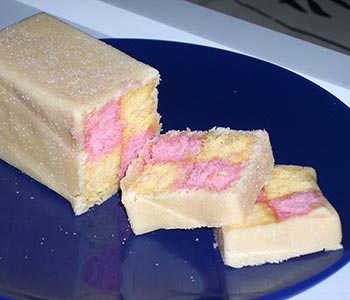Your IQ Is 140 Or Higher If You Know The Longitude and Latitude Of These Cities

Caring for your skin is essential for maintaining a healthy, youthful appearance. While countless commercial skincare products are available, many people are turning to natural, DIY remedies to nourish and protect their skin. These homemade treatments often use simple, readily available ingredients and can be as effective as their store-bought counterparts. In this article, we'll explore 12 proven DIY skincare remedies that you can easily incorporate into your beauty routine.
1. Honey and Cinnamon Mask for Acne-Prone Skin
Honey has natural antibacterial properties, while cinnamon has anti-inflammatory effects, making this combination an excellent choice for fighting acne [1]. Mix one tablespoon of raw honey with 1/4 teaspoon of ground cinnamon, apply to the face, and rinse off after 10-15 minutes.
2. Oatmeal and Yogurt Mask for Sensitive Skin
Oatmeal has a soothing effect on the skin, while yogurt contains lactic acid, which gently exfoliates and moisturizes [2]. Mix 1/4 cup of ground oats with 2 tablespoons of plain yogurt, apply to the face, and rinse off after 15-20 minutes.
3. Avocado and Honey Mask for Dry Skin
Avocado is rich in healthy fats and vitamins moisturizing and nourishing the skin, while honey has humectant properties that help retain moisture [3]. Mash half an avocado and mix it with one tablespoon of raw honey, apply to the face, and rinse off after 15-20 minutes.
4. Turmeric and Milk Mask for Brightening Skin
Turmeric contains curcumin, a compound with antioxidant and anti-inflammatory properties that can help improve skin tone and reduce dark spots [4]. Mix 1/4 teaspoon of turmeric powder with 1 tablespoon of milk, apply to the face, and rinse off after 10-15 minutes.
5. Aloe Vera Gel for Sunburned Skin
Aloe vera has cooling and soothing properties that can help relieve sunburn and promote healing [5]. Apply fresh aloe vera gel directly to the affected areas and let it absorb into the skin.
6. Cucumber and Lemon Juice Toner for Oily Skin
Cucumber has astringent properties that help reduce excess oil, while lemon juice has natural bleaching and antibacterial effects [6]. Blend half a cucumber, mix it with 1 tablespoon of lemon juice, strain the mixture, and use it as a toner after cleansing.
7. Green Tea and Witch Hazel Toner for Aging Skin
Green tea is rich in antioxidants that help protect the skin from free radical damage, while witch hazel has astringent and anti-inflammatory properties [7]. Steep a green tea bag in 1/4 cup of hot water, let it cool and mix it with 1/4 cup of witch hazel. Use as a toner after cleansing.
8. Coffee Scrub for Cellulite
Coffee grounds can help improve circulation and reduce the appearance of cellulite [8]. Mix 1/2 cup of coffee grounds with 1/4 cup of coconut oil, massage onto the affected areas in circular motions, and rinse off in the shower.
9. Baking Soda and Coconut Oil Scrub for Rough Skin
Baking soda is a gentle exfoliant, while coconut oil has moisturizing properties [9]. Mix 1/4 cup of baking soda with 1/4 cup of melted coconut oil, apply to rough skin patches, and rinse off after a few minutes.
10. Oatmeal and Honey Bath for Eczema
Oatmeal has anti-inflammatory and soothing properties that can help relieve eczema symptoms, while honey has antibacterial effects [10]. Add 1 cup of finely ground oats and 1/4 cup of raw honey to a warm bath, soak for 15-20 minutes, and pat dry.
11. Strawberry and Yogurt Mask for Dull Skin
Strawberries contain alpha-hydroxy acids (AHAs) that help exfoliate and brighten the skin, while yogurt moisturizes and soothes [11]. Mash 4-5 ripe strawberries, mix with 2 tablespoons of plain yogurt, apply to the face, and rinse off after 15-20 minutes.
12. Rosehip Oil for Uneven Skin Tone
Rosehip oil is rich in vitamins A and C, which can help reduce the appearance of dark spots and hyperpigmentation [12]. Apply a few drops of rosehip oil to clean the skin before bed, and massage gently until absorbed.
When using these DIY skincare remedies, it's essential to patch test first to ensure you don't have any adverse reactions. It's also important to remember that while these natural treatments can be effective, they may not work for everyone. If you have persistent skin concerns, it's always best to consult a dermatologist.
By incorporating these simple, natural ingredients into your skincare routine, you can nourish and protect your skin without relying on harsh chemicals or expensive products. Try these 12 DIY remedies and see how they can transform your skin's health and appearance.
References
- McLoone, P., Oluwadun, A., Warnock, M., & Fyfe, L. (2016). Honey: A Therapeutic Agent for Disorders of the Skin. Central Asian Journal of Global Health, 5(1). https://doi.org/10.5195/cajgh.2016.241
- Pazyar, N., Yaghoobi, R., Kazerouni, A., & Feily, A. (2012). Oatmeal in dermatology: a brief review. Indian Journal of Dermatology, Venereology, and Leprology, 78(2), 142. https://doi.org/10.4103/0378-6323.93629
- Lin, T.-K., Zhong, L., & Santiago, J. (2017). Anti-Inflammatory and Skin Barrier Repair Effects of Topical Application of Some Plant Oils. International Journal of Molecular Sciences, 19(1), 70. https://doi.org/10.3390/ijms19010070
- Vollono, L., Falconi, M., Gaziano, R., Iacovelli, F., Dika, E., Terracciano, C., Bianchi, L., & Campione, E. (2019). Potential of Curcumin in Skin Disorders. Nutrients, 11(9), 2169. https://doi.org/10.3390/nu11092169
- Hekmatpou, D., Mehrabi, F., Rahzani, K., & Aminiyan, A. (2019). The Effect of Aloe Vera Clinical Trials on Prevention and Healing of Skin Wound: A Systematic Review. Iranian Journal of Medical Sciences, 44(1), 1-9. https://www.ncbi.nlm.nih.gov/pmc/articles/PMC6330525/
- Leyden, J. J., Shergill, B., Micali, G., Downie, J., & Wallo, W. (2011). Natural options for the management of hyperpigmentation. Journal of the European Academy of Dermatology and Venereology, 25(10), 1140-1145. https://doi.org/10.1111/j.1468-3083.2011.04130.x
- Prasanth, M., Sivamaruthi, B., Chaiyasut, C., & Tencomnao, T. (2019). A Review of the Role of Green Tea (Camellia sinensis) in Antiphotoaging, Stress Resistance, Neuroprotection, and Autophagy. Nutrients, 11(2), 474. https://doi.org/10.3390/nu11020474
- Ngamdee, P., Wichai, T., Jiamyangyuen, S., & Rojanapanthu, P. (2020). Antioxidant and Anti-inflammatory Activities of Spent Coffee Ground Extracts and Potential Application in Topical Body Care Product. Chiang Mai University Journal of Natural Sciences, 19(3), 588-598. https://doi.org/10.12982/CMUJNS.2020.0038
- Varma, S. R., Sivaprakasam, T. O., Arumugam, I., Dilip, N., Raghuraman, M., Pavan, K. B., Rafiq, M., & Paramesh, R. (2019). In vitro anti-inflammatory and skin protective properties of Virgin coconut oil. Journal of Traditional and Complementary Medicine, 9(1), 5-14. https://doi.org/10.1016/j.jtcme.2017.06.012
- Ilnytska, O., Kaur, S., Chon, S., Reynertson, K. A., Nebus, J., Garay, M., Mahmood, K., & Southall, M. D. (2016). Colloidal Oatmeal (Avena Sativa) Improves Skin Barrier Through Multi-Therapy Activity. Journal of Drugs in Dermatology, 15(6), 684-690. https://jddonline.com/articles/dermatology/S1545961616P0684X
- Gasparrini, M., Forbes-Hernandez, T. Y., Afrin, S., Reboredo-Rodriguez, P., Cianciosi, D., Mezzetti, B., Quiles, J. L., Bompadre, S., Battino, M., & Giampieri, F. (2018). Strawberry-Based Cosmetic Formulations Protect Human Dermal Fibroblasts against UVA-Induced Damage. Nutrients, 10(5), 605. https://doi.org/10.3390/nu10050605
- Phetcharat, L., Wongsuphasawat, K., & Winther, K. (2015). The effectiveness of a standardized rose hip powder, containing seeds and shells of Rosa canina, on cell longevity, skin wrinkles, moisture, and elasticity. Clinical Interventions in Aging, 10, 1849-1856. https://doi.org/10.2147/CIA.S90092









